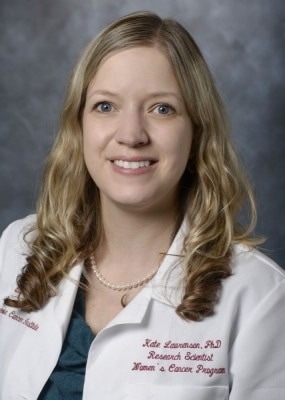At Cedars-Sinai, a special and elaborate molecular profile of endometriosis has been engineered by investigators to help enhance therapeutic options for the millions of women suffering from the disease.
 Kate Lawrenson, PhD. Image Credit: Cedars Sinai.
Kate Lawrenson, PhD. Image Credit: Cedars Sinai.
The study has been recently reported in the Nature Genetics journal.
Endometriosis has been an understudied disease in part because of limited cellular data that has hindered the development of effective treatments. In this study we applied a new technology called single-cell genomics, which allowed us to profile the many different cell types contributing to the disease.”
Kate Lawrenson, PhD, Study Co-Senior and Corresponding Author and Associate Professor, Department of Obstetrics and Gynecology, Cedars-Sinai
Endometriosis is defined as a condition in which cells of the uterine lining, or ones equivalent to endometrial tissue, are found growing in inappropriate places—most generally on the fallopian tubes, ovaries, and the abdominal cavity.
The disease affects around 10% of women, generally during their reproductive years. Patients with the disorder have the potential to experience fatigue, headaches, chronic pain, infertility, and bladder and bowel dysfunction.
At present, there is an availability of a few good treatment options for women who are diagnosed with endometriosis. Lawrenson and her co-investigators were capable of profiling endometriosis with the help of advanced methods enabling them to collect an immense amount of data from the cells of just 21 patients. Here, few of them had the gynecological disorder and others who were healthy.
We generated a cellular atlas of endometriosis after analyzing nearly 400,000 individual cells from these patients. We were able to identify the molecular differences between the major subtypes of endometriosis, including peritoneal disease and ovarian endometrioma.”
Kate Lawrenson, PhD, Study Co-Senior and Corresponding Author and Associate Professor, Department of Obstetrics and Gynecology, Cedars-Sinai
Also, Lawrenson is an associate professor in the Department of Biomedical Sciences.
Investigators anticipate this vital new database will result in improved care.
“Identifying these cellular differences at such a detailed level should allow us to better understand the origins, natural progression, and potential therapeutic targets for treatment. We are currently limited to hormonal therapy and surgical excision, with variable success and frequent recurrence of disease,” stated Matthew Siedhoff, MD, MSCR, vice chair of Gynecology at Cedars-Sinai and a co-author of the study.
Endometriosis has been linked to a moderately high risk of developing a few cancers. Frequently, medical scientists have noted similarities in the way the disorders tend to function.
“The disease can travel throughout the body, so in many ways it behaves like cancer. But why does endometriosis behave like cancer while rarely becoming cancer? Large-scale next generation sequencing projects have been incredibly helpful in understanding how cancer works and in designing targeted therapeutics. We expect it can do the same for endometriosis,” stated Lawrenson, co-director of the Women’s Cancer Research Program at Cedars-Sinai Cancer.
Already, investigators at Cedars-Sinai have started utilizing the new cellular atlas of endometriosis for therapeutic targets in a mouse model of the disease to be tested.
This resource can now be used by researchers all throughout the world to study specific cell types that they specialize in, which will hopefully lead to more efficient and effective diagnosis and treatment for endometriosis patients. It really is a game changer.”
Kate Lawrenson, PhD, Study Co-Senior and Corresponding Author, Associate Professor, Department of Obstetrics and Gynecology, Cedars-Sinai
Mapping Endometriosis: A Vast Cellular Atlas Is Created | Cedars-Sinai
Video Credit: Cedars Sinai.
Source:
Journal reference:
Fonseca, M. A. S., et al. (2022) Single-cell transcriptomic analysis of endometriosis. Nature Genetics. doi.org/10.1038/s41588-022-01254-1